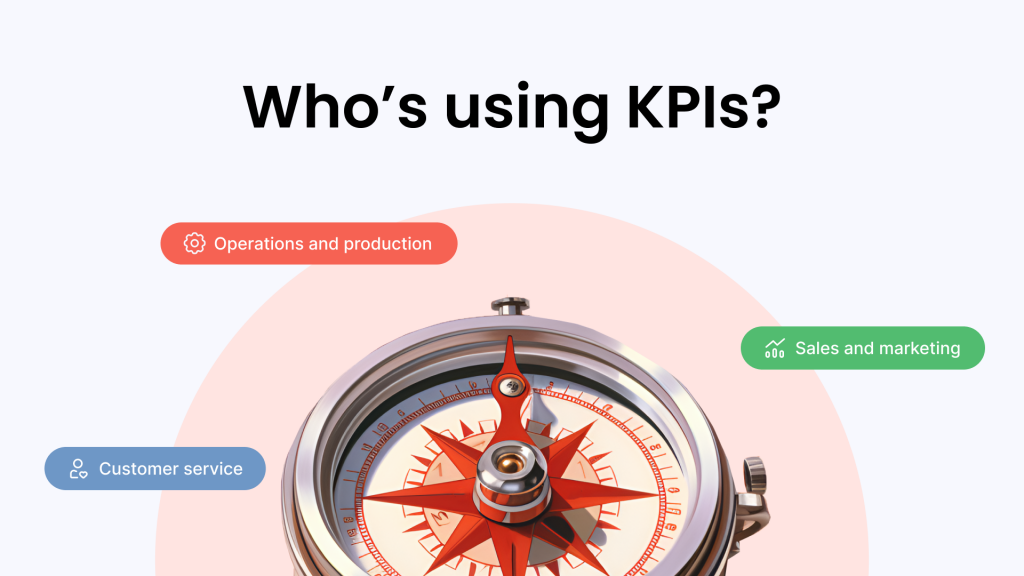Employee motivation and performance guidance requires a clear and well thought out roadmap with clear check-points and measurable outcomes to guide employees and teams to success. While there are many management approaches—7 C’s of team effectiveness and 9-box grid to name a couple—KPIs continue to be a guiding principle for team alignment, with HR and management regularly assessing how to set KPI.
Key Performance Indicators, or KPIs—are guiding lights towards organizational success. You could think of KPIs as the pulse of your organization—the measurable heartbeat that reveals how well you’re performing against your goals. These quantifiable metrics are more than just numbers. They’re powerful instruments that align teams, channel focus, and elevate outcomes. A KPI, in essence, is a vital sign for your business, providing insights into its health and vitality. Understanding the process and how to set KPI will set you up for effective management within your organization.
Tips for Effective KPI Implementation
Effective implementation of KPIs relies on a well-structured approach that involves various stakeholders and ensures clear communication. Here’s what you need to know about how to set KPI, and get everyone working towards them.
Involve Stakeholders in the Process
Begin by engaging a cross-functional group of stakeholders in the KPI selection process. Involving representatives from different departments ensures that KPIs reflect the broader organizational goals and resonate with various teams. This collaborative approach not only enriches the selection process but also encourages a sense of shared responsibility for achieving the desired outcomes.
Engage Team Members in KPI Selection
A key component to how to set KPI is to empower your team members to contribute to the KPI selection process. By seeking their input and insights, you promote a sense of ownership and commitment to the chosen metrics. This collaborative involvement not only enhances the relevance of the selected KPIs but also fosters a culture of participation and mutual support.
Obtain Buy-In from Management and Leadership
Securing support from management and leadership is necessary for successful KPI implementation. Clearly articulate how KPIs align with organizational objectives and contribute to performance improvement. Their endorsement lends credibility and provides the necessary resources and direction for effective execution.
Communicate Clearly and Regularly
Maintain transparent and consistent communication about the purpose, progress, and impact of each KPI. Regular updates, either through dedicated 1-on-1s or simple email check-ins keep team members informed and motivated, while also allowing for necessary adjustments if performance veers off course.
Learn more: How to Motivate Employees
Explain the Purpose and Importance of Each KPI
Ensure that team members understand the rationale behind each selected KPI. Clearly communicate how these metrics relate to broader organizational goals and individual contributions. This clarity helps foster a collective understanding and commitment to achieving KPI targets.
Hold Regular Meetings to Discuss Progress and Challenges
Scheduled meetings provide dedicated platforms to review KPI progress, share successes, and address obstacles. Regular check-ins enable the team to collectively assess performance and strategize effectively in response to challenges.
Foster a Culture of Accountability
Cultivate an environment where team members take ownership of their assigned KPIs. Encourage them to view KPIs as integral to their responsibilities and empower them to proactively contribute to the achievement of targets.
Encourage Ownership and Responsibility for KPIs
Promote individual ownership of KPIs by encouraging team members to take initiative and responsibility for their assigned metrics. This sense of ownership drives a proactive approach to performance improvement and generates a sense of pride in contributing to organizational success.
Recognize and Reward Achievements
Acknowledging and celebrating achievements reinforces a culture of accomplishment and encourages sustained effort. Recognize team members who excel in achieving KPIs, whether through formal recognition programs, feedback, or other incentives that amplify motivation and commitment.
Read next: How to Set Key Performance Indicators for Employee
14 Practical KPI Examples

KPIs are the compass of organizational progress, guiding teams toward their objectives. Here are 14 actionable examples of how to set KPI, spanning various domains to illuminate the path of success:
Sales and Marketing
Customer Acquisition Cost (CAC): Measure the cost required to acquire each new customer, aiding in cost-effective customer acquisition strategies.
Conversion Rate: Track the percentage of leads that convert into paying customers, gauging the effectiveness of your sales and marketing efforts.
Monthly Sales Growth: Monitor the monthly increase in sales revenue to assess business expansion and performance trends.
Operations and Production
On-Time Delivery Rate: Evaluate the percentage of orders delivered on time, reflecting your commitment to timely customer service.
Defective Product Rate: Quantify the percentage of defective products in your inventory, highlighting production quality and efficiency.
Overall Equipment Effectiveness (OEE): Measure the utilization and effectiveness of production equipment to optimize operational efficiency.
Customer Service
Customer Satisfaction Score (CSAT): Assess customer contentment with your products or services through surveys, offering insights into service quality.
First Response Time: Track the time taken to respond to customer inquiries, ensuring prompt and efficient customer support.
Customer Retention Rate: Calculate the percentage of customers retained over a specific period, indicating customer loyalty and service quality.
Human Resources
Employee Turnover Rate: Monitor the rate at which employees leave your organization, aiding retention strategies and identifying workplace satisfaction levels.
Time to Hire: Measure the time taken to fill job vacancies, streamlining recruitment processes and ensuring efficient talent acquisition.
Employee Engagement Score: Evaluate employee engagement levels through surveys, fostering a motivated and productive workforce.
Training and Development Participation Rate: Gauge employee involvement in training programs, promoting skill development and professional growth.
Diversity and Inclusion (D&I) Index: Assess the inclusivity and diversity within your workforce, highlighting progress toward creating an equitable work environment.
Each of these KPI examples serves as a navigational tool for how to set KPI, providing insights into specific aspects of your organization’s performance. By tracking and optimizing these metrics, you can fine-tune strategies, enhance decision-making, and steer your teams toward continued growth and success.
Achieving KPI Excellence: Guiding Your Organization to Success

We’ve explored the intricacies of effective implementation and applicable examples to help guide you through how to set KPI. It’s important to remember these metrics are more than numbers—they serve as indicators of progress and areas for improvement.
By understanding the nuances of successful execution and drawing inspiration from real-world instances, you can navigate the KPI landscape with confidence. Embrace the notion that these metrics embody both the journey’s advancement and opportunities for refining your strategies.
Knowing how to set KPI for employees requires strategic input and consideration from managers, however the tracking and gathering of data can become yet another time-consuming administrative task. Omni helps you track, analyze and gain actionable insights from performance data through an automated and digitized platform. Easily and quickly gather the data you need so you can spend more time on the strategic planning necessary to drive business outcomes.
To learn more about how Omni can automate and improve your performance tracking practices, schedule a demo with our team today.


